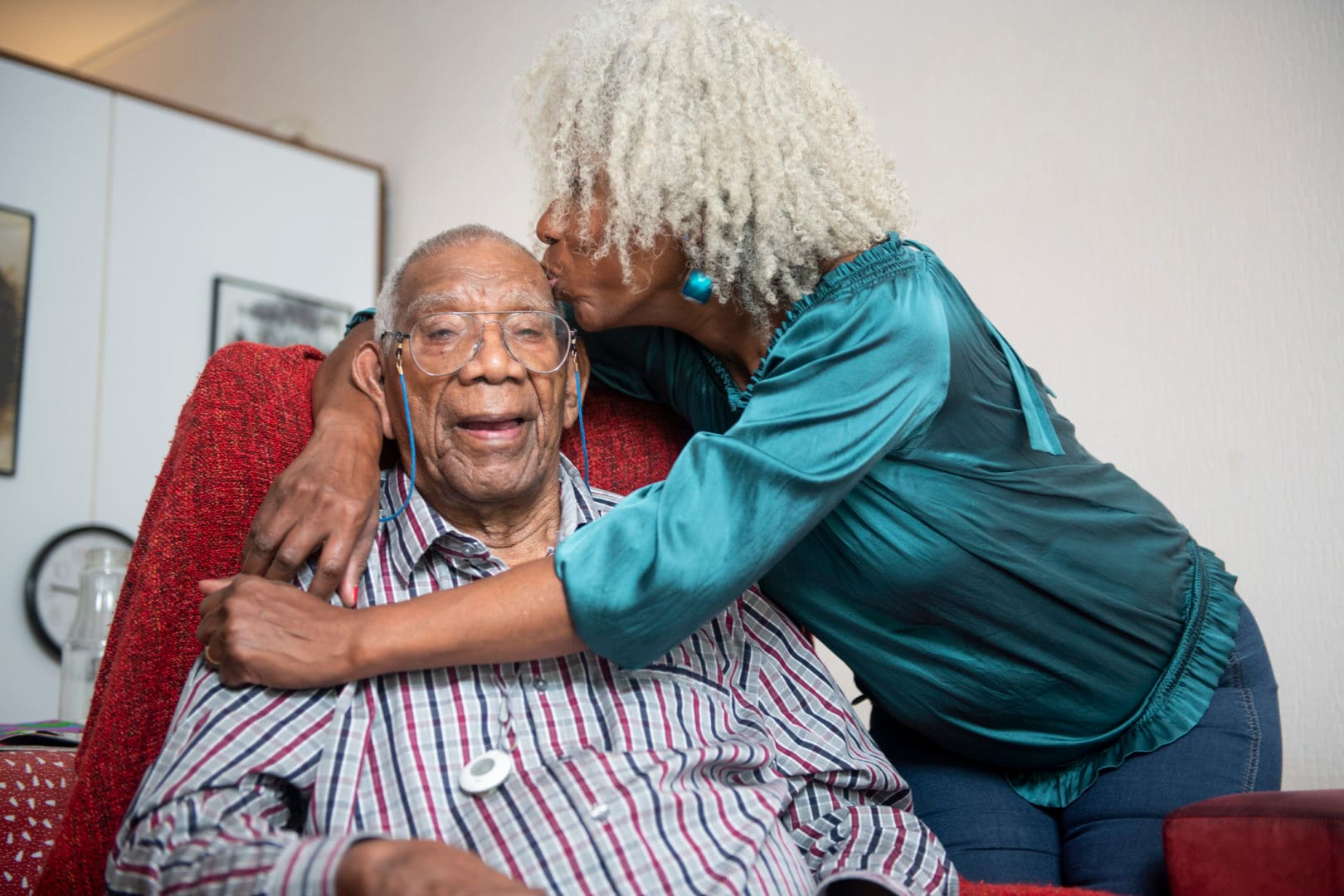As our nation reckons with its legacy of racism, family caregivers grapple with the implications of racism on the long-term care placement decisions for their loved ones of color. As Sarah Johnson, a geriatric registered nurse and the health ambassador for Family Assets, puts it, “Placing parents or older relatives into long-term care is a difficult decision at the best of times and even more so when questions of race and equitable treatment must be asked.”
Daily, interpersonal experiences of racism are mentally and emotionally harmful. Recent studies have explored how racism deteriorates the health of Black people over the course of their lives. Unfortunately, the cumulative effect of race-related stress leaves Black seniors more vulnerable to illness and, most recently, COVID-19.
And with Black seniors at higher risk of dying from COVID-19 and an increased awareness in our country to institutional racism, now is an opportunity for long-term care to come “out of the shadows” and ensure anti-racist care, says Tetyana Shippee who holds her doctorate in sociology and gerontology and is a professor and associate director of research for the Center for Healthy Aging and Innovation at the University of Minnesota in Minneapolis.
For Black people looking to find a long-term care home for their loved ones, finding an anti-racist long-term care facility is a difficult task with very little existing direction on how to navigate the search. Here, experts offer a look at the roots of this challenge and how caregivers can vet facilities to land on the best choice.
Racism in senior care: The big picture
Seventy percent of Black people of all ages report experiencing racism and discrimination, according to a 2020 poll by Kaiser Family Foundation. What’s more, Black seniors also report experiencing discrimination in health care and poorer treatment by healthcare providers.
The fact of the matter: Health care services for adults perpetuate institutional racism. Historically, Black people have had unequal access to health care. Adults 65 and older lived through Jim Crow era segregation when most hospitals wouldn’t even serve Black people. Even today, though segregation is illegal, the effects of it remain.
Shippee explains that just as “white flight” — in which white people continued to move to segregated neighborhoods to live away from people of color — shaped the makeup of our nation’s largely segregated cities, senior care has experienced a white flight of its own. “We’ve seen fewer white people, a decrease of 10% in the last 10 years, of white people using nursing homes,” she says. “Meanwhile, the numbers of nonwhite people using nursing homes is doubling and tripling.”
As people of color move more toward nursing homes, white people trend toward private pay assisted living facilities.
The culture in long-term care facilities, however, has been established to provide care mainly for white people, says Shippee. Without attention to the cultural differences and social factors that determine health outcomes for Black people, long-term care providers help exacerbate racial health disparities.
“It’s no secret that racial disparities exist across the senior care industry,” says Teresa Crawford, owner and operator of The Creeks, a group of memory care and assisted living facilities for seniors in Illinois and Wyoming. “Those disparities are well documented in nursing homes.” For example, nursing homes that primarily serve Black and Latino seniors have been twice as likely to get hit by COVID-19 as those that primarily serve white seniors, regardless of quality — making anti-racism in nursing homes a matter of life or death.
One woman’s experience looking for an anti-racist facility
Amina Patterson, a 44-year-old from Atlanta, Georgia, thought of all the usual concerns when she and her family started searching for senior care facilities for her mom. Quality of care, location and all of the usual questions were top of mind, but Patterson also wanted to protect her mother from the insidious racism she’d experienced all of her life.
Patterson’s mom experienced dangerously overt racism in the Jim Crow South in Mississippi and fled to the North in the 1940s only to experience it in a different way. “My mother, now 70, grew up being assaulted by white people while protesting for basic human rights in America, and the wounds have never fully healed,” says Patterson. Her experiences left the 70-year-old apprehensive of older white people. “It all leaves a permanent mark.”
Ultimately, after researching and visiting three other long-term care facilities, Patterson found a senior living facility in a Black neighborhood. She says she and her mom couldn’t be happier. “She is safe,” says Patterson. “She’s surrounded by people who look like her and who are culturally competent.”
Change is happening
Patterson says she got lucky finding a senior care facility for her mother that’s culturally competent while providing quality care and respect, given that it’s an uphill battle for most people in her position.
Thankfully, while caregivers are right to be concerned about the quality of care their loved ones will receive Xavier Beckles, senior advisor at senior care referral service Cleo’s Connections in Tampa, Florida, is hopeful that the landscape in long-term care is changing.
“Due to the pandemic, senior care is preparing for some major changes in regulations and quality of care,” Beckles says.
How to vet long-term care facilities
Although change is on the horizon, it is also important to do your research, speak up and then follow up. In other words, state how you wish your loved one to be treated — and if possible, perform proper checks to ensure the right care is given, says Beckles.
Here’s how to start the vetting process:
1. Scour the web
Johnson says that while researching, people should go deeper than company websites and comparing amenities. Instead, she says, use as many online resources as you can. A few options:
-
The Better Business Bureau: This will allow you to analyze past customer experiences.
-
EldercareMatters.com and Seniorcare.com: Both of these sites provide location-specific senior care statistics and guides to help locate facilities.
-
Glassdoor.com: This employer review site will help you find any accounts of racism former staff members have experienced.
2. Start at the top
Even though people of color are more likely to be on the front lines of care in nursing homes, Shippee says it’s important to look at “who’s at the table.” According to her expertise and ongoing research, people of color in leadership roles in long-term care are rare but are one indicator that the quality of life for the facilities residents of color is better.
The leadership of any long-term care organization sets the tone and the culture for the rest of the facility, and Shippee says leaders should reflect the community where they’re located.
A couple of ways you can get a read on this:
-
Ask the CEO or any other leader within the organization about any diversity and inclusion initiatives.
-
Ask outright whether their staff receive any cultural competence training, recommends Johnson. “This would provide valuable insight into the company’s broader anti-racist philosophy,” she says.
3. Observe interactions and listen to word of mouth
“See how the executive director interacts with the residents and staff,” says Beckles. “The care in the facility is a direct reflection on how much the executive director cares because they are leading the ship.”
Pay careful attention to how the staff and residents interact, he advises. “This is extremely important because they are the ones that would potentially provide the care to your loved one. You want to look for signs that show the care staff is willing to go above and beyond for your family member or a resident,” he says. “A more personable interaction can be signs of a great caregiver.”
For what you can’t observe firsthand, Crawford suggests asking for testimonials specifically from BIPOC while interviewing or touring any long-term care facility. “It would also be worthwhile to contact family members of former residents at those facilities,” she says. “In most cases, you can reach out to the facility directly and ask for a contact list of past patients and their family members.”
Ask them specifically about their experiences with the facility and if they are aware of any racial disparities that may exist there. “Those genuine accounts from the family members of past residents will provide some clear insight into how the facility focuses on racial equity,” says Crawford.
4. Check out the programming and menus
To find out what kind of programming initiatives an organization has, Beckles recommends asking, “What current programs do you have in place that promotes inclusion for all residents besides weekly or daily activities?”
You’ll want to prioritize this step given that the programming and food provided to residents is directly tied to the quality of life for residents, says Shippee. If all of a facility’s programming is focused on white people, and there’s no tailoring to reflect the cultural preferences, that’s a detriment to the quality of care and the experience residents of color will have there. If people live their whole lives playing certain games or eating certain foods, Shippee explains that spending the later years of their lives in a facility that doesn’t recognize those cultural experiences can be harmful to their well-being.
The bottom line: “Look at the big picture quality measures, but then look at the food. Look at the activities,” says Shippee. “Meet with leadership and look at other aspects of care delivery we know matter so much and contribute to equity.”





